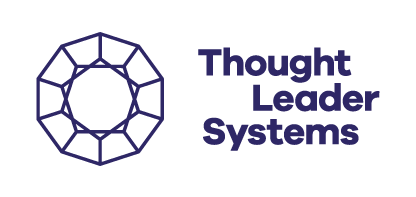It is a core principle of inbound marketing not to push or pressure people in the purchasing decision process, but to attract them at every stage of the marketing process through resonance and to move them to the next step in their customer journey through pull-effect.
Conversion Rate in Inbound Marketing
When a prospect (lead) takes a step toward the provider and thus advances a stage in their purchase decision process, this is called a conversion. For example, a prospect who downloads a whitepaper from a website or registers for a webinar does so because they expect to gain value from it and are motivated by their own initiative. The term "conversion" aptly describes this process, as it implies a voluntary and determined shift toward engaging with your content or offers. This self-directed customer behavior is exactly what the inbound marketing process relies on.
Any action a potential customer takes in interaction with your marketing tools (e.g., registering on a website, downloading content) is a conversion. The path a customer takes along their journey, interacting with your marketing tools, is their personal conversion path. Viewing your website from this perspective, you see not just individual web pages but how these pages work together in the sequence a potential customer follows.
Does their journey start at the homepage? Where do they go next? Do they view additional content pages, or do they visit your "About Us" page at a certain point in their conversion path? Did all customers who purchased your products in the last four weeks first view your pricing page? How did those who did not check pricing but called directly behave? Which of your later customers read your blog posts beforehand? As you can see, analyzing conversion paths can be very detailed.
Examine the key conversion paths for each customer type (buyer persona) and each decision stage of a buyer persona-on your website and in conjunction with other media (e.g., social media, phone, email).
These conversion paths mark the journey of inbound marketing to turn a stranger into a customer. Your task and opportunity as an inbound marketer is to analyze and optimize the performance of these crucial conversion paths. Inbound marketing software can significantly help with this. It helps you optimize conversion rates from one stage to the next in the buying process. This makes your marketing increasingly successful, as you more effectively guide more people through their decision-making process toward a purchase.
You measure the success of progressing from one marketing step to the next with Conversion Rates. How effectively you are at transforming your traffic into leads, customers, and promoters is indicated by the conversion rates at each step.
Conversion Rates are crucial levers in inbound marketing. With inbound marketing software, you can track and manage key conversion rates and implement measures for their continuous improvement. The three most important conversion rates along your customers' journey are the following:
- Lead Conversion: What proportion of your traffic do you convert into leads? How much do you increase the percentage of traffic you convert into leads over time?
- Customer Conversion: What is your success rate in converting qualified leads into customers? How many of these customers are high-value, long-term customers? Does the quality of customers remain constant or even improve over time? Are the average revenues from new customers increasing or decreasing?
- Fan Conversion: How many and which of your acquired customers become active promoters, fans, or advocates of your company? How many new prospects or customers do these customer-fans bring in? Does their number increase over time? How do you assess the quality of new customers acquired through referrals compared to your other customers?
With Inbound Marketing, you engage in professional conversion rate optimization. The key to converting strangers into customers lies in understanding the information and purchase decision behavior of your key target customers. We have frequently used the term Buyer Personas for this purpose. Buyer Personas are a core component of Inbound Marketing. Thinking in terms of Buyer Personas reflects the modern understanding of customers in Inbound Marketing.


